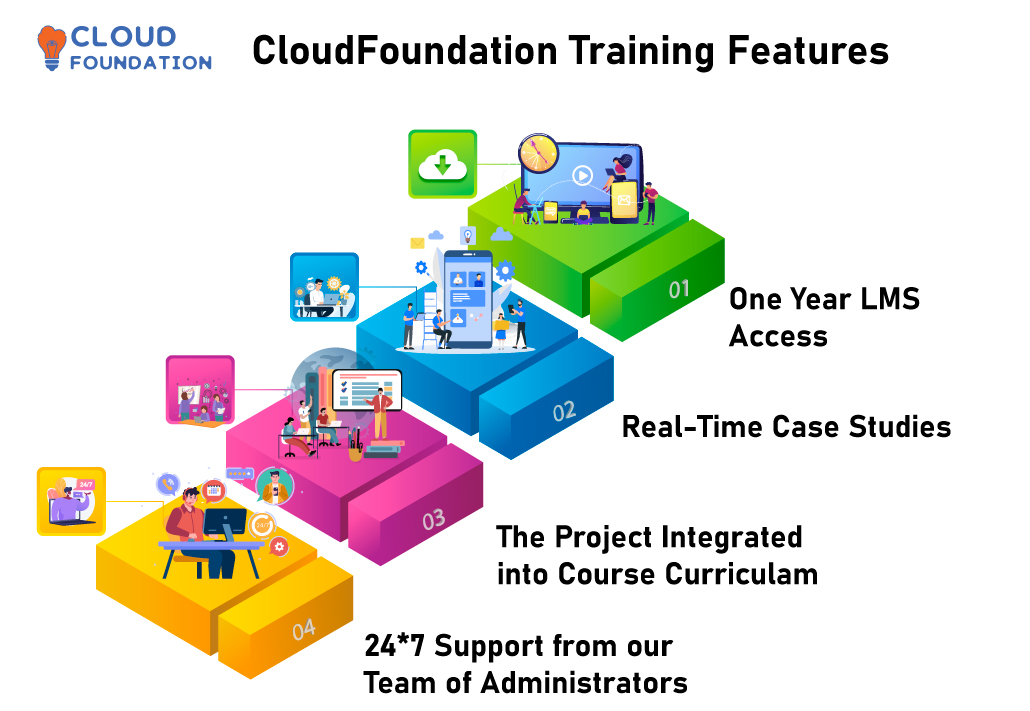Pega Training
⏰26 hours | ▶️ 28 Videos | 📣 9142 Participants | 🎓 4012 Reviews | 4.8 ⭐⭐⭐⭐⭐
Choose a Plan that Works for You
Self Paced
- Advanced sessions
- Interview Q&A
- Free study Materials
- Premium Technical support
Instructor Led Live Training
- Live Instructor
- Advanced sessions
- Interview Q&A
- Premium Technical Support
Corporate Training
- Live Instructor
- Advanced sessions
- Interview Q&A
- Premium Technical Support
Upcoming Batches PST
Weekday
| Apr 11(1 HR A DAY) |
| 07:30 PM PST |
| Enroll Now → |
Weekday
| Apr 29(1 HR A DAY) |
| 07:30 AM PST |
| Enroll Now → |
Weekend
| Apr 20(1 HR A DAY) |
| 08:30 PM PST |
| Enroll Now → |
Upcoming Batches IST
Weekday
| Apr 12(1 HR A DAY) |
| 08:00 AM IST |
| Enroll Now → |
Weekday
| Apr 29(1 HR A DAY) |
| 08:00 PM IST |
| Enroll Now → |
Weekend
| Apr 21(1 HR A DAY) |
| 09:00 AM IST |
| Enroll Now → |
Course Description
Pega Training course is to impart practical, in-depth instruction covering all the essentials of the Pega platform. Being exposed to real-world use-cases and scenarios in the industry helps students improve their abilities and apply them in reality.
Learn everything from fundamentals to advanced techniques in architecture, design, and development using Pega
Learn in-demand skills for building Enterprise Business Process Management solutions using PEGA through on-demand videos or a live Pega training session guided by a freelance professional trainer.
Skilled IT specialists organized the PEGA training and covered the topics for the PEGA certification. With the aid of our thorough PEGA training from skilled industry professionals, you can attain the greatest degree of complete expertise in the essential fundamentals of advanced PEGA concerns. Our skilled trainers will not only supply outstanding BPM knowledge but will also provide better help to learn PEGA in order to get the PEGA CSA certification.
Pega allows for faster and higher-quality application development than Java because to its Drag and Drop UI and easily customizable application parameters. The platform presents the opportunity of integrating multi-stream processing into a single system while also simplifying, automating, and documenting business operations. We deliver the most thorough, useful, and current Pega training. On the Pega Process Commander, numerous frameworks have been developed to serve different business objectives.

Course Content
1. INTRODUCTION TO PEGA
Pega Overview
Introducing Situational Layer Cake in Pega
Finding your way around the Pega platform
Studios that develop applications
A pega platform’s roles.
2. CASE MANAGEMENT: Designing a case life cycle
Cycle of a case
Making a case life cycle design
How to change a case’s status
How to include directions in an assignment.
3. CASE MANAGEMENT: Setting a service level
Customer service agreements
Adding SLA to an Assignment
A case’s SLA: How to Add It
How to incorporate SLA into the case life cycle.
4. CASE MANAGEMENT : Controlling the workflow
Optional measures
Adding optional actions to a case: how to do it
Omitting steps and processes
How to bypass a step or procedure in a workflow
Concurrent processing
How to run many processes simultaneously
Deciding factors
How to incorporate decision points into a procedure.
5. CASE MANAGEMENT: Routing Work to Users
Planning work
How to route a project
How to set up customized routing
Case approval settings
Setup instructions for a single case approval
How to set up a cascading approval system.
6. CASE MANAGEMENT: Configure a case Hierarchy
Introduction to Case Hierarchy Configuration
Rules and types of rules
Rules and sets of rules
Class hierarchy and classes
How to build an a rule
How to make a rule update
How to utilize inheritance to reuse rules
Case progression
How to make case types dependent on one another
The addition of a child case.
7. DATA MODELLING : Adding fields to a Case Type
Introduction to a case type’s fields
Data components used in the Pega application
Management of properties
How to make a property reference
Defining characteristics
User opinions
Setting up user views.
8. DATA MODELLING : Data in Memory
Introduction to Memory Data
Memory-based data storage
PyWorkpage
Viewing clipboard data
How to utilize the keyboard to use and set property values.
9. Data Modeling : Manipulating Case Data
Introduction to automatic value setting
Transforms of Data
How to use data transforms to set values
How to establish property default values
Super classing and data transformations.
10. DATA MODELLING : Calculating Case Values
Introduction to Case Value Calculation
Processing of declarations
Make expressions known.
How to use a declare expression to set a property value
Chaining both forward and backward.
11. VALIDATION : Validating Case Data
Introduction to Case Data Validation
Methods for validating data
How to use controls to validate case data
How to use validate rules to validate case data
Using a validation rule to verify a flow action rule
Application of edit validate rules.
12. INFORMATION EXCHANGE : Using the Integration Designer
How to use an integration designer to visualize data.
13. INFORMATION EXCHANGE: Creating Data Types
Processing application data using data types
How to design a data type with local sources
How to set up a data source for a specific data type currently in use
How to develop a datatype with external sources.
14. INFORMATION EXCHANGE: Managing Data Pages and Views
Views and pages of data
How to access sites with on-demand data
How to set up the options for data page sourcing
How to use a datapage to preserve data.
15. USER INTERFACE: Customizing User View Layout
Introduction to user form configuration
Section regulations
Principles for creating user views
Configuring a section
Setting up responsive Ui behavior.
16. USER INTERFACE : Adding dynamic Content to User Views
Introduction to enhancing user views with dynamic content
UI dynamic design
Setting up dynamic content
Event handling
Setting up event processing.
17. USER INTERFACE: Styling an Application
Introduction to application styling
Application of skin-based styling
How to use skin to alter the look of an application
Controlling the skin’s look in an application.
18. Case Management : Sending Correspondence
Introduction to setting up the correspondence and sending it
Communication about cases
A case’s email being sent
Setting up correspondence rules.
19. Reporting : Creating Business Reports
A Brief Introduction to Business Reports
Reports’ purpose
Reports on business and process
Reporting browser
A guide to report creation
How to structure a report’s outcomes
Publishing a report.
20. Reporting : Optimizing Report Data
Applications using pega for data storage
Property improvement
Enhancing buildings for reporting.
21. Application Development : Unit Testing Rules
Unit tests
How to test a rule in a unit
How to create an automatic unit test recording.
22. Application Development : Delegating Rules
Business Rule delegation
The best way to assign rules to business users.
23. Advanced Topics:
Decision Trees and Tables of Decisions
Integration(Services and connections) (Services and connectors)
Activities
Packaging an application for import or export
Making a product regulation
The pre- and post-processing steps
Various forms.
FAQ’s
❓What is Pega?
✅ When compared to other Java-based applications, PEGA’s speed of change execution makes it a popular Business Process Management (BPM) solution. PEGA is mostly employed for economic reasons, specifically those concerned with cost reduction and enhancement. PEGA is developed with Java’s OOP and Java concepts.
❓ How long does it take to learn PEGA?
✅ Certification programmes exist for those interested in mastering pega. The course can be finished in 20-22 hours due to its digital or online nature. To earn a Pega certification, candidates must pass a test or exam.
❓ Is PEGA difficult to learn?
✅ Although having a technical background is advantageous, Pega may be learned without one. Learning Pega Course , in my opinion, would be the finest course of action. There are many materials available, and the training is simple and basic.
❓ Is coding required for PEGA?
✅ These are some of the benefits of using Pega. Pega’s unified Visual Designer Studio allows for the design of features without the need for coding. Pega BPM can be utilised in both managed clouds and private clouds to hone the necessary skills for an app’s deployment.
❓ Who is eligible for PEGA?
✅ There are two tests you have to take to earn your Pega Certified Lead System Architect designation: Both a written Architecture Exam and a practical Application Exam, in which candidates design and build an application on the Pega Platform, are required of candidates.
❓ Are PEGA developers in demand ?
✅ The necessity for companies to become more effective and productive will increase the need for Pega developer services. Because of its ability to improve efficiency and effectiveness, business process automation (BPA) software will continue to be a popular investment among corporations.
❓ How do I start a career in PEGA?
✅ Pega developers have a bright future ahead of them, with many of career prospects. There is a high demand for competent programmers all across the world. Every company must use Pega since it is the only viable option for a business process management application that supports developers.
❓ Which company uses PEGA?
✅ U.S.-based Google, a professional services firm with 174506 workers and $259M in annual sales, and the U.S. Department of Veterans Affairs, a government agency with 512752 people and $250B in annual revenue, are just two examples of companies that use Pega BPM for Process Mining.
❓ How many attempts are allowed in PEGA exam?
✅ There is a 12-month window during which you can retake any exam three times.
❓ Is Pega open source?
✅ Pega is a free and open RPA platform. By utilising the application’s UI, it is possible to automate previously manual processes. Two forms of PEGA automation are: Automation of a Procedure.
❓ What is Pega course?
✅ Business Process Management (BPM) and Customer Relationship Management (CRM) (BPM). PEGA is a platform for creating business process management (BPM) and customer relationship management (CRM) software. Web and enterprise apps can be built with this java backend engine without the need for any programming or coding.
The focus of the introductory Pega course is on familiarising students with the various business process management solutions available. It’s a useful tool for creating Java-based customer relationship management and business process management applications.
Suggested Courses




Tibco SpotFire Training
⭐⭐⭐⭐⭐
😃 79 Learners




WorkDay Training
⭐⭐⭐⭐⭐
😃 158 Learners




SailPoint Training
⭐⭐⭐⭐⭐
😃 106 Learners




MuleSoft Training
⭐⭐⭐⭐⭐
😃 221 Learners
A few of our students
















Contact Us